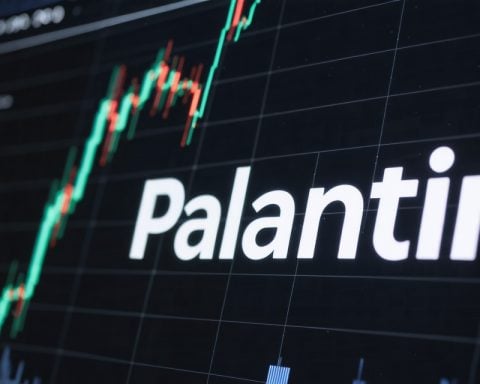Gaming and Leisure Properties Inc, known as GLP, is a real estate investment property trust that specializes in acquiring, financing, and owning real estate properties leased to gaming operators. With a portfolio consisting of interests in sixty-one gaming facilities, GLP holds a strong market presence in the industry.
Recent evaluations by eleven analysts offer a diverse range of opinions on GLP’s future prospects. Analyzing their ratings and price targets can provide valuable insights into the company’s market position.
The analysts’ evaluations over the past three months reveal various sentiments, with seven analysts being somewhat bullish, one analyst maintaining a bullish outlook, three analysts remaining indifferent, and no analysts expressing a bearish opinion.
Exploring the actions taken by analysts, it becomes evident that they respond to market conditions and company performance by adjusting their ratings and price targets. For example, Brad Heffern from RBC Capital raised his rating to ‘Outperform’ with a current price target of $52.00, while James Feldman from Wells Fargo lowered his rating to ‘Equal-Weight’ with a price target of $48.00.
Additionally, analysts’ ratings, which range from ‘Outperform’ to ‘Underperform’, provide a qualitative assessment of GLP’s expected performance compared to the broader market.
Furthermore, analysts adjust their price targets to provide estimates of GLP’s future value. The current average target stands at $50.45, a slight increase from the previous average of $50.25.
In analyzing GLP’s financial performance, several key metrics stand out. While the company’s net margin excels beyond industry benchmarks at 46.38%, its return on equity (ROE) lags behind industry averages at 4.21%. On the other hand, GLP’s return on assets (ROA) surpasses industry benchmarks at 1.48%. Additionally, GLP maintains a healthy debt-to-equity ratio of 1.67, suggesting a balanced approach to financing.
It’s important to understand that analyst ratings are determined through meticulous analysis of financial statements, participation in conference calls, and engagement with industry insiders. While they provide valuable insights, it’s crucial to consider these ratings alongside other financial metrics to make well-informed investment decisions.
In conclusion, by examining analyst ratings and relevant financial metrics, investors can gain a comprehensive understanding of Gaming and Leisure Properties Inc’s market position. Stay informed and make data-driven decisions to navigate the dynamic gaming industry successfully.
Here are some additional facts relevant to the topic of analyzing gaming and leisure properties:
1. Gaming and Leisure Properties Inc (GLP) was established in 2013 as a spin-off from Penn National Gaming Inc, which transferred its real estate assets to GLP.
2. GLP operates primarily in the United States, with properties located in various states including Pennsylvania, Indiana, Ohio, and Mississippi.
3. The gaming industry has been experiencing growth in recent years, driven by factors such as the legalization of sports betting in some states and the increasing popularity of online gaming.
4. GLP’s business model of leasing properties to gaming operators provides a steady stream of rental income, as gaming companies often prefer to focus on their operations rather than owning real estate.
5. GLP has actively sought opportunities for expansion through acquisitions, including the acquisition of the Tropicana Las Vegas Hotel and Casino in 2021.
6. One of the key challenges in the gaming and leisure industry is the potential impact of regulatory changes and legislation, which can affect the profitability and operations of both gaming operators and the properties they lease.
7. Another challenge is the growing competition in the gaming market, as new casinos and gaming facilities are constantly being established, leading to potential oversaturation in certain regions.
8. There may also be controversies surrounding the social and economic impacts of the gaming industry, including concerns about problem gambling and the potential displacement of other businesses in the local community.
Advantages of analyzing gaming and leisure props:
– By analyzing analyst ratings and financial metrics, investors can gain insights into the market position and potential future performance of a company like GLP.
– Understanding the financials and ratings can help investors make more informed investment decisions and manage risk effectively.
– Analyzing gaming and leisure properties can provide insights into broader trends in the gaming industry, which can be beneficial for investors looking to capitalize on the growth in this sector.
Disadvantages of analyzing gaming and leisure props:
– Analyst ratings and financial metrics can be subjective and may not always accurately reflect the true value or prospects of a company.
– The gaming and leisure industry can be highly volatile and influenced by factors such as changing consumer preferences, regulatory changes, and economic conditions, making it challenging to predict future performance accurately.
– Investors need to consider a variety of factors outside of analyst ratings and financial metrics, such as competitive landscape, industry trends, and the overall economic outlook, to make well-rounded investment decisions.
Key questions:
1. What is GLP’s market presence in the gaming and leisure industry?
2. How have analysts’ ratings and price targets for GLP changed over the past few months?
3. What are the key financial metrics of GLP, such as net margin, ROE, ROA, and debt-to-equity ratio?
4. What are the advantages and disadvantages of analyzing gaming and leisure properties for investors?
5. What are the key challenges and controversies associated with the gaming and leisure industry?
Suggested related link to the main domain:
– Gaming and Leisure Properties Inc – Official Website


















